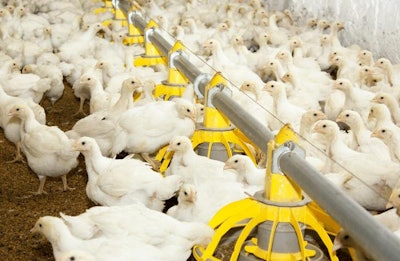
A recent research report from Sweden, presented during the European Symposium on Poultry Nutrition (ESPN) conference in early May 2017, indicated that broilers during the first week post-hatch may benefit from an increased dietary electrolyte balance. Although this was not the primary focus of this specific research project, it was evident that increasing the dietary electrolyte balance increased feed intake, and consequently growth, without affecting feed efficiency — and thus the digestibility of nutrients.
How dietary electrolyte balance affects feed intake remains a matter of debate.
How dietary electrolyte balance affects feed intake remains a matter of debate. Some authorities believe it is due to a neural-cerebral cascade of signals that increase appetite. Others follow a more obvious route, claiming the increased dietary electrolyte balance is causing an excess of mineral ingestion, which in turn enhances water intake. The latter is considered the key to explaining higher feed intake, especially in heat or otherwise stressed animals. Perhaps, it is a combination of the two, or both effects are valid under different circumstances. What remains is that slight increases in dietary electrolyte balance often lead to increased feed intake.
This observation is often followed during the summer months, and with particular vigor in pig diets. Applying such nutrition treatment to diets for early feeding of post-hatch broilers remains an interesting notion that can be combined with specialty ingredients that can lead to one of the trendy super pre-starter broiler feeds. These are usually fed for the first few days, rarely up to a week post-hatch.
For those who would like to access the research report that caught my eye, it can be found on page 207 in the ESPN 2017 proceedings. The authors are Lorje and Rengman from Perstop. I am not in agreement with their experimental design and subsequent conclusions, but I am using their side observations here for something that can be of wider interest in the nutrition community.
















